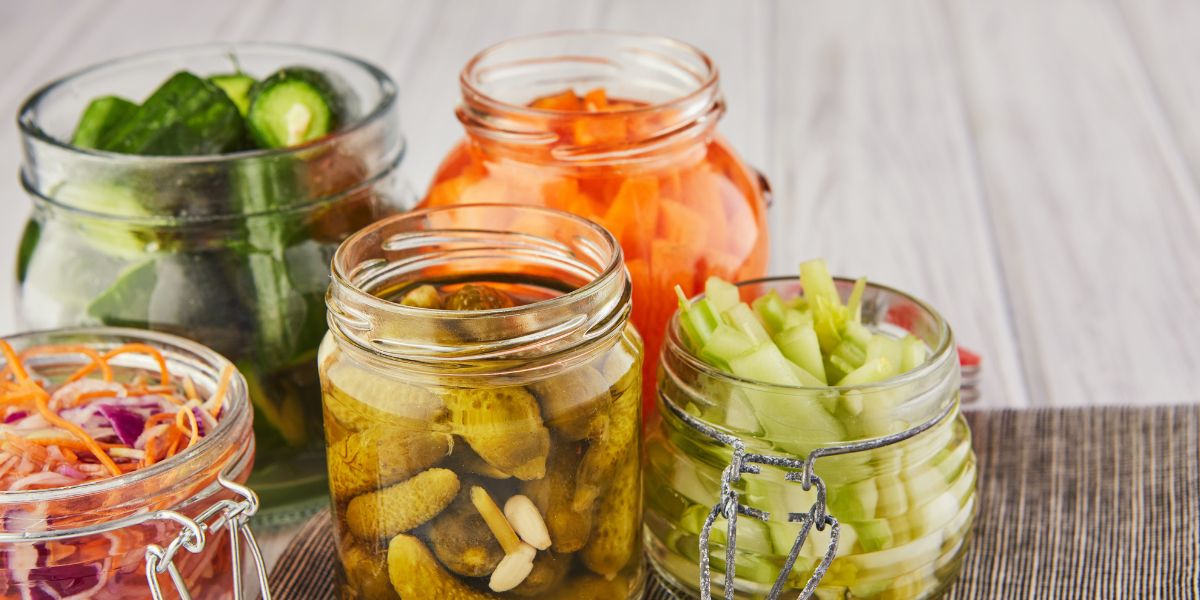Fermented pickles are vegetables preserved through a natural fermentation process using beneficial bacteria. This method enhances flavor, improves shelf life, and offers probiotic benefits. Unlike vinegar-based pickling, fermentation relies on saltwater brine and time to develop tangy, crunchy pickles fermented pickles recipe.
This guide explains how to make fermented pickles, key steps, and answers common questions.
What Are Fermented Pickles?
Fermented pickles are cucumbers preserved in a saltwater brine that encourages the growth of lactic acid bacteria. These bacteria convert sugars in cucumbers into lactic acid, which acts as a natural preservative. This process gives fermented pickles their distinctive sour taste and crunchy texture.
Ingredients Needed for Fermented Pickles
- Fresh cucumbers (pickling cucumbers are ideal; about 2 pounds)
- Non-iodized salt (such as kosher or sea salt; 3 tablespoons)
- Filtered water (4 cups, chlorine-free)
- Optional flavorings: garlic cloves, dill, mustard seeds, peppercorns, bay leaves
Using fresh cucumbers free from blemishes ensures the best results.
Step-by-Step Fermented Pickles Recipe
1. Prepare the Brine
Dissolve 3 tablespoons of non-iodized salt in 4 cups of filtered water. Stir until fully dissolved. Chlorine-free water prevents disruption of fermentation.
2. Clean and Trim Cucumbers
Wash cucumbers thoroughly. Trim blossom ends to reduce enzymes that may soften pickles.
3. Pack Cucumbers and Flavorings
Place cucumbers vertically in a clean glass jar. Add garlic cloves, dill sprigs, mustard seeds, peppercorns, or bay leaves as desired.
4. Pour the Brine
Pour the prepared brine over the cucumbers until they are fully submerged. Leave about one inch of headspace at the top.
5. Weigh Down the Cucumbers
Use a fermentation weight or a clean glass object to keep cucumbers submerged under the brine. This prevents mold growth.
6. Cover the Jar
Cover the jar with a cloth or fermentation lid to allow gases to escape while keeping contaminants out.
7. Ferment at Room Temperature
Keep the jar at about 65–75°F (18–24°C) for 5 to 14 days. Check daily to ensure cucumbers remain submerged and remove any scum.
8. Taste and Refrigerate
Start tasting pickles after 5 days. When they reach desired sourness, seal with a lid and refrigerate. Fermented pickles can last several months when refrigerated.
Benefits of Fermented Pickles
- Rich in probiotics that support digestive health
- Natural preservation without artificial preservatives
- Enhanced vitamin and mineral availability
- Crunchy texture and complex sour flavor
FAQ: Fermented Pickles Recipe
What type of salt is best for fermenting pickles?
Non-iodized salt such as kosher or sea salt is recommended to avoid additives that can inhibit fermentation.
How long does fermentation take?
Fermentation usually takes 5 to 14 days at room temperature depending on temperature and taste preference.
Can I use tap water?
Tap water containing chlorine or chloramine should be avoided. Use filtered or boiled and cooled water.
How do I know if my pickles went bad?
Signs of spoilage include foul odor, slimy texture, or mold growth on cucumbers or brine.
Do fermented pickles need refrigeration?
Refrigeration slows fermentation and preserves the pickles after they reach the desired taste.
Conclusion
Making fermented pickles is a simple, natural way to preserve cucumbers while enhancing flavor and nutrition. This fermented pickles recipe uses fresh ingredients and a saltwater brine to encourage healthy bacterial growth.
The process requires minimal equipment and yields crunchy, tangy pickles rich in probiotics. Proper fermentation, storage, and attention to cleanliness ensure safe, delicious results that can last for months in the refrigerator.

